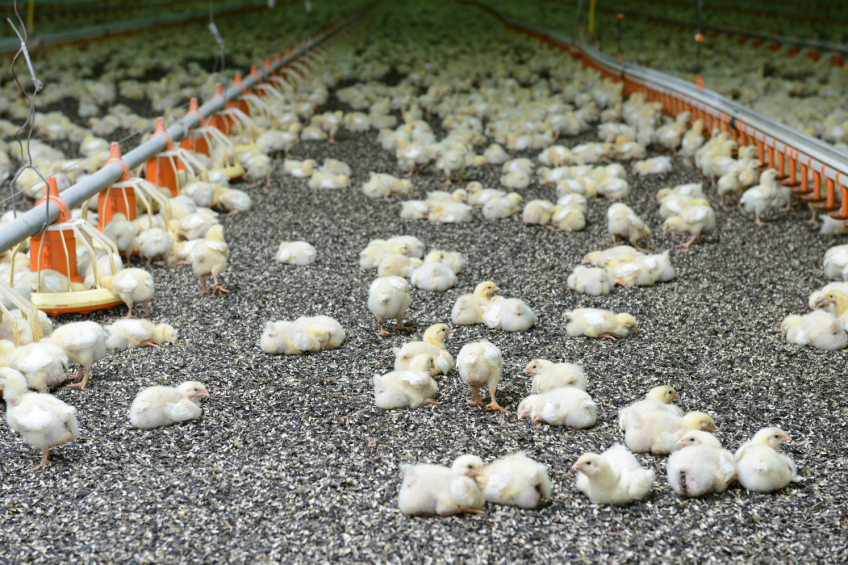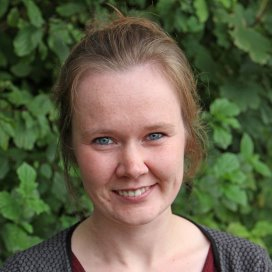The Netherlands is MHP’s gateway to Europe

The Ukrainian company Myronivsky Hliboproduct (MHP) has teamed up with international partners in the Netherlands and abroad to better supply its international customers. A company which equates to 70% of the whole Dutch poultry meat industry’s turnover last year, is co-financed by Dutch and European banks and produces well below the Western European cost price. It’s a competitor to be reckoned with.
It is Ukraine’s largest poultry meat producer, and a large player within the Ukrainian agribusiness. The poultry meat production is almost fully integrated: grain is produced by themselves on the vast areas of agricultural land the company has acquired over the years. The poultry farm branch of the company consists of hatcheries, parent stock and poultry growing farms, abattoirs and processing facilities. The scope of the farms is huge. The latest Vinnytsia poultry operation is the largest poultry farm in Europe with 12 zones of 32 poultry houses each. Each house has a capacity for at least 50,000 broilers. Director and founder is Yuriy Kosyuk, according to the American Forbes is the 5th wealthiest man in Ukraine, accounting for around US$ 1billion, started his career trading on the stock market and as an importer of gas. The integration is listed on the London Stock Exchange.
“Our main objective is the Ukrainian market”, says Anastasiya Sobotuyk, director investor relations and international communication at MHP. According to her the Ukrainian market radically changed with the arrival of MHP. When the company started 18 years ago, it was the first company to produce fresh poultry meat on a large scale. Over the past few years production, and subsequently export, were scaled up. Last year MHP exported 132,080 tonnes of poultry meat, of which 27,285 tonnes to Europe. Other major destinations are the Middle East, North Africa and the former Soviet states in the region. “In Ukraine MHP has a market share of around 60%,” says Sobotuyk. Now MHP opens its first foreign registered office in Veenendaal, the Netherlands.

Anastasiya Sobotuyk, director investor relations and international communication at MHP:
“The Ukrainian market is our main customer, however we are looking across borders as well.” Photo: Mardal
Why an office in the Netherlands?
“2015 showed us that we have to control and manage our export and sales more accurately. This year we opened joint ventures in different parts of the world. We start in the Netherlands, with processing in Veenendaal, in collaboration with Jan Zandbergen (a Dutch trade company). In 2016 we also opened distribution centres in Saudi Arabia, the United Arab Emirates and Egypt. We start in the Netherlands with a facility with two production lines for processing poultry meat. With this we want to improve the service for our major customers. The Dutch office is currently in a test phase. Within a few a few years it will be able to operate at full capacity, resulting in 8,000 tonnes of processed meat.
What kind of product will you produce in Veenendaal?
“MHP’s production companies are situated in Ukraine alone. We slaughter in Ukraine, and export breast caps to the Netherlands, where they are deboned, processed into various products and packaged. Our partner Jan Zandbergen will sell these products, fresh or frozen, to European countries. The main customers will be food service companies and catering companies.”
Where does the chicken which is processed in Veenendaal come from?
“This is a mixture of Ukrainian and EU produced chicken. In what proportions is difficult to say, we are still in the launching phase. In Veenendaal our monthly production totals only 150 tonnes poultry meat.”
Why a location in the Netherlands of all places?
“For us it’s logical, historically we have been working together with the Dutch. We use Dutch equipment and are co-financed by Dutch banks. Maybe 80% of the equipment used is from the Dutch market. The Netherlands historically is a trading country, which is good for us. And the Netherlands has been the gateway to the European Union throughout history, it is logical to trade with the EU from that location. The Netherlands is the place we process the product, and from there it is sold all over the EU. We have been collaborating with Jan Zandbergen since 2013.
The EU is only 1 partner, we don’t want to focus just on 1 market. We started exporting in 2008. Our main customers were Russia, Kazakhstan and the CIS countries (former Soviet states such as Uzbekistan and Kyrgyzstan). After several years Russia started the ‘trade wars’, they stopped importing for a few months and then started again. We understood then we couldn’t focus on 1 market alone. Our chicken production increases every year. We produce what the market asks for. Europe has a yearly production of 13 million kg poultry meat and imports 0.8 million tonnes. Most of the frozen chicken originates from Brazil and Thailand. We are closer and we can sell you fresh poultry meat.”
Should European poultry farmers be worried?
“They shouldn’t be worried. They export meat to Ukraine, we export meat to the EU, that is how the market works. MHP is now importing hatching eggs from Germany and Hungary. A new breeding establishment in Ukraine is in hands of rebels in the East of the country. Our customers here in the European Union are food service companies and the catering industry, not retail.”
Poultry meat which has been processed in the Netherlands and sold in other countries, is this being sold under Dutch label?
“It depends on the demands of the customer. We have several customers in several countries, who have their own labelling requirements. One demands a label which mentions the country the chicken was processed in. In Ukraine for instance, KFC is a major customer, who wants a label with the chicken’s country of origin.”
It has been implied that having a location in the Netherlands enables you to import in excess of the tax free quota that applies to the import of poultry meat from the Ukraine.
“We can export more out-of-quota, but we must pay taxes when the chicken is produced in Ukraine. We can’t increase the volume within the quota limits. If we want to export more, we must pay import levies.”
Is MHP the only Ukrainian company using the tax-free quota for poultry meat?
“ Currently there is one other company which makes use of this: Agromars. One of their locations is certified. Not many companies are able to grow in Ukraine, they have to finance everything themselves. When companies are not transparent enough they can’t work with international financial institutes. This is why some businesses are not so modern. Gaining a EU certificate is difficult. MHP has four branches that are certified to export to the EU out of 15 companies.”
What about the production standards MHP uses?
“I understand there’s usually room for improvement. Animal health service GD, Dutch veterinarians, will supervise us as we’re entering the EU market. Regulations vary per country. We are ready to be in compliance with the rules. The GD trains our people and visits our companies. The idea is that this expert view will bring us added value. Talking about animal welfare for example, we use sunflower and straw as litter. Stocking density is currently in line with Global Gap requirements: 38 to 39 kilograms per square meter. We come very close to the standards in the Netherlands. We have natural lighting in the house, offering at least 6 hours of darkness per day. The use of antibiotics is restricted, only used in consultation with our veterinarians. We only use antibiotics preventively against mycoplasmas. We comply with the EU and Global Gap rules.”
How does the future look for MHP?
“In the immediate future, we will produce 600,000 tonnes poultry meat, of which 25% is destined for export. This is roughly 160,000 to 170,000 tonnes, of which 20% will go to the European Union. We will produce various products, depending on what the market requires. North African countries for example, prefer smaller, frozen chicken. 5 years from now our production will be roughly 730,000 tonnes. Next year we will start the construction of a new business location. Then, around 60% will be for local consumption and 40% destined for export, of which maybe 30 to 40% for the European Union.”
In the North West Europe broiler concepts, slow growing birds are gaining popularity. Do you want to produce for this segment as well?
“We produce whatever the market demands. Currently, the market mainly asks for regular chickens. But we are prepared for change, we watch what the market does. This is a business. If we don’t produce what the market asks for, you must change. And we are ready to change.”













